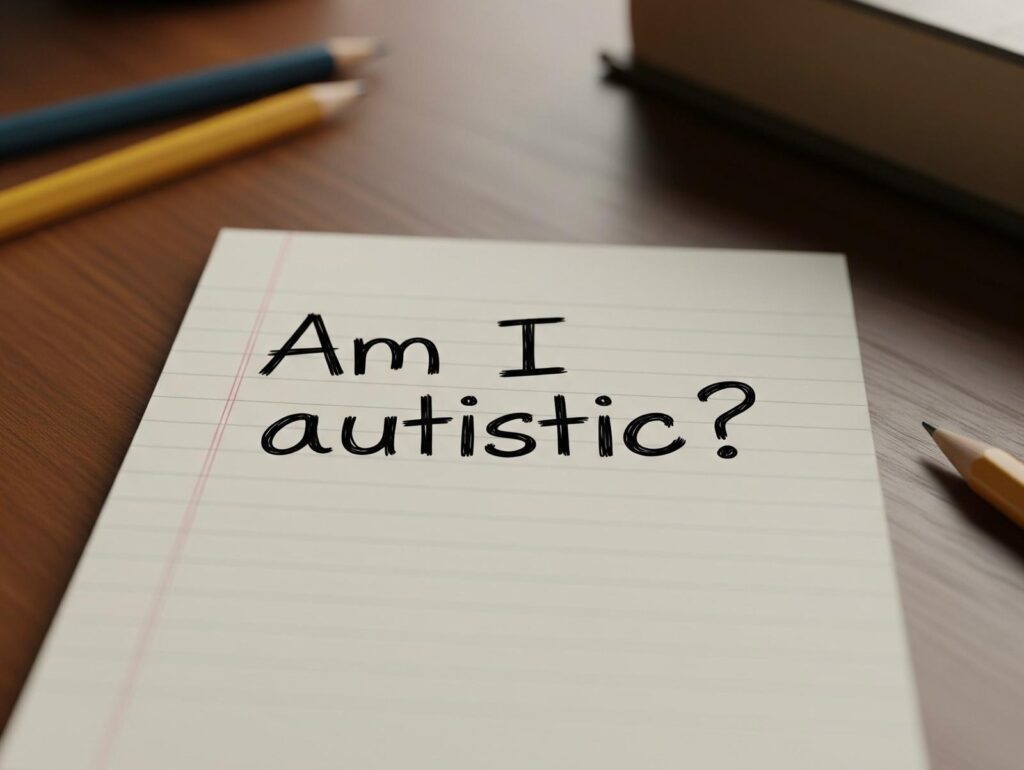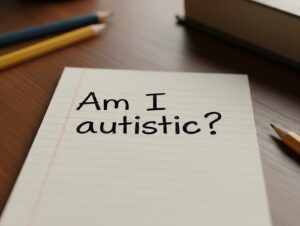Body image refers to an individual’s perceptions, thoughts, and feelings about their physical appearance. It encompasses how people view their own body, the importance they place on physical appearance, and how they believe others perceive them. In today’s media-driven world, body image has become a critical issue, influencing mental health, self-esteem, and overall well-being. This article delves into the concept of body image, its impact on mental health, and ways to promote a healthy body image.
Keywords: Body shaming effects, Long-term effects of body shaming, Body image and mental health, Psychological impact of body shaming, Body dissatisfaction and self-esteem, Social isolation and body image, Body shaming and eating disorders, Weight stigma and discrimination
What Is Body Image?
Body image is multidimensional, comprising both perceptual and attitudinal components (Cash, 2004). It includes:
- Perceptual Body Image: How you perceive your body size, shape, and appearance. This perception may or may not be accurate.
- Attitudinal Body Image: How you feel about your body, including your thoughts about its shape, size, and attractiveness.
Negative body image, often termed body dissatisfaction, occurs when there is a significant gap between how a person perceives their body and their ideal body image, often influenced by societal beauty standards (Grabe, Ward, & Hyde, 2008).
Impact of Media on Body Image
The media plays a significant role in shaping perceptions of body image, particularly through the promotion of narrow beauty ideals. Studies have shown that frequent exposure to unrealistic body standards in social media, television, and advertising can lead to body dissatisfaction, especially among women and adolescents (Tiggemann & Slater, 2014). The portrayal of thin, fit, or surgically-enhanced bodies as the ideal standard can pressure individuals to conform to these unrealistic standards, often resulting in negative mental health outcomes.
Social comparison theory suggests that people compare themselves to others, often leading to dissatisfaction if they perceive themselves as falling short (Festinger, 1954). This can trigger a cycle of self-criticism, lowered self-esteem, and increased likelihood of developing eating disorders (Levine & Murnen, 2009).
Psychological Effects of Negative Body Image
Negative body image is associated with a range of mental health issues, including:
- Anxiety and Depression: Research has consistently shown a link between body dissatisfaction and increased symptoms of anxiety and depression (Brechan & Kvalem, 2015). Individuals who are dissatisfied with their appearance are more likely to experience feelings of worthlessness, sadness, and hopelessness.
- Eating Disorders: Body dissatisfaction is a significant risk factor for the development of eating disorders such as anorexia nervosa, bulimia nervosa, and binge-eating disorder. The pursuit of an unrealistic body ideal can lead to unhealthy behaviours such as restrictive eating, purging, or excessive exercise (Stice & Shaw, 2002).
- Low Self-Esteem: Negative body image often leads to low self-esteem, which can affect other areas of life, such as relationships, work, and social interactions. People with low self-esteem may avoid social situations due to fear of judgment or criticism regarding their appearance (Cash, 2004).
Gender and Body Image
While body image concerns are often associated with women, research shows that men are increasingly affected as well. Societal pressures for men to achieve a muscular physique, known as the “ideal male body,” have led to muscle dysmorphia, a condition where individuals obsess over the belief that their muscles are not large enough (Olivardia, 2007).
Additionally, men are more likely to use performance-enhancing drugs, such as steroids, in pursuit of the muscular ideal, which can lead to health risks, including liver damage, heart problems, and mental health issues (Grieve, 2007).
The Role of Social Media in Body Image Issues
Social media plays a significant role in shaping body image issues, particularly among adolescents and young adults. The constant exposure to curated and often unrealistic images can negatively impact how individuals perceive their own bodies, leading to body dissatisfaction, anxiety, and even the development of eating disorders. Here’s how social media influences body image:
1. Social Comparison
One of the primary ways social media impacts body image is through social comparison. Platforms like Instagram, TikTok, and Facebook allow users to compare themselves with influencers, celebrities, and even peers. These comparisons are often made against highly curated and edited content, which presents unrealistic beauty standards. Research has shown that upward social comparisons (comparing oneself to people perceived as more attractive or successful) lead to body dissatisfaction and negative self-perception (Fardouly et al., 2015).
2. Editing and Filters
The prevalence of photo editing apps and filters allows users to enhance their appearance, making it difficult to differentiate between real and digitally altered images. This can contribute to an unrealistic standard of beauty, where flawless skin, slim bodies, and exaggerated features become the norm. This widespread use of editing tools has been linked to lower body satisfaction, particularly among young women (Tiggemann & Slater, 2014).
3. Influencers and Fitspiration Culture
The rise of fitness influencers and “fitspiration” (fitness inspiration) content has also been a double-edged sword. While some content encourages healthy living, much of it promotes unattainable body ideals, leading followers to adopt extreme dieting, excessive exercise, or even develop eating disorders to achieve these goals (Boepple et al., 2016). The pressure to conform to these ideals can cause feelings of inadequacy when individuals are unable to achieve the same results.
4. Likes and Validation
Social media platforms rely on a system of likes, comments, and followers as forms of social validation. This can create a toxic environment where individuals, especially teenagers, tie their self-worth to their online popularity. The desire for positive reinforcement may lead users to engage in risky behaviours, such as extreme dieting, to fit into beauty standards that are praised by the online community (Stapleton et al., 2017).
5. Body Positivity Movements
On a positive note, social media has also been instrumental in promoting body positivity and diversity. Movements like #BodyPositivity and #EffYourBeautyStandards have encouraged users to embrace all body shapes, sizes, and appearances. These movements aim to counter the negative impact of social comparison by promoting self-love and acceptance. Studies suggest that exposure to body-positive content can improve body satisfaction and reduce the harmful effects of idealised body images (Cohen et al., 2019).
The Effects of Body Shaming
Body shaming can have profound and lasting effects on an individual’s mental, emotional, and physical health. While the immediate impact of body shaming is often apparent—lowered self-esteem and emotional distress—the long-term effects can be even more damaging, influencing various aspects of a person’s life. Here are some key long-term consequences of body shaming:
1. Chronic Low Self-Esteem and Body Dissatisfaction
One of the most significant long-term effects of body shaming is chronic low self-esteem and body dissatisfaction. When individuals are repeatedly subjected to negative comments about their appearance, they often internalise those criticisms. Over time, this can lead to a persistent negative self-image and dissatisfaction with their bodies (Grabe et al., 2008). Individuals may struggle with feelings of inadequacy and worthlessness, which can extend beyond appearance to other aspects of life, such as social relationships and career success.
2. Mental Health Disorders
Repeated body shaming is linked to the development of several mental health disorders:
- Anxiety and Depression: Body shaming can contribute to the onset of anxiety and depression, particularly in individuals who already struggle with body image issues. Studies have shown that individuals who experience body shaming are more likely to report symptoms of depression and anxiety over time (Jackson & Chen, 2015).
- Eating Disorders: Body shaming is a well-established risk factor for the development of eating disorders such as anorexia nervosa, bulimia nervosa, and binge-eating disorder. Individuals who are shamed for their weight or appearance may resort to extreme dieting, purging, or binge eating to try to conform to societal expectations (Neumark-Sztainer et al., 2006). These disordered eating behaviours can have serious, long-lasting health consequences.
3. Social Isolation and Relationship Struggles
Body shaming can lead to social withdrawal and isolation. People who experience body shaming may avoid social situations for fear of judgment or ridicule, leading to loneliness and difficulty forming close relationships. This isolation can be particularly harmful during adolescence, a critical period for social development (Puhl & Suh, 2015). Additionally, body shaming can damage intimate relationships, as individuals with body image issues may struggle with intimacy and trust.
4. Physical Health Consequences
The psychological distress caused by body shaming can have negative effects on physical health as well:
- Increased Stress and Cortisol Levels: Repeated exposure to body shaming can lead to chronic stress, which in turn raises cortisol levels. Elevated cortisol over long periods can contribute to various health problems, including heart disease, high blood pressure, and weakened immune function (Jackson & Chen, 2015).
- Unhealthy Weight Control Behaviours: Body shaming often leads to unhealthy weight control behaviours, such as extreme dieting, the use of weight-loss pills, or excessive exercise. These behaviours can result in nutrient deficiencies, weakened bones, cardiovascular issues, and long-term metabolic damage (Neumark-Sztainer et al., 2006).
5. Stigma and Discrimination
Body shaming can reinforce harmful societal stigma and discrimination, particularly against individuals who do not conform to conventional beauty standards or who are overweight or obese. People who are subjected to body shaming may face weight stigma in areas such as employment, healthcare, and education, further perpetuating inequality and leading to poorer outcomes in these areas (Puhl & Heuer, 2010).
6. Substance Abuse
In some cases, individuals may turn to substance abuse as a coping mechanism for the emotional distress caused by body shaming. Alcohol and drugs can be used to numb feelings of shame or inadequacy. However, this can lead to addiction, exacerbating both physical and mental health issues (Stice, 2002).
Strategies for Promoting a Positive Body Image
While negative body image can significantly impact mental health, there are steps individuals and communities can take to foster a more positive body image:
- Media Literacy: Educating individuals, particularly young people, about the ways in which media distorts body images can help reduce the impact of unrealistic beauty standards. Understanding that photos are often edited and manipulated can create a more critical perspective on the images presented.
- Focus on Function Over Form: Shifting the focus from appearance to body functionality—what the body can do, rather than how it looks—can help promote body positivity. Encouraging a mindset of appreciation for one’s body, rather than criticism, is essential for long-term well-being (Grogan, 2016).
- Mindfulness and Self-Compassion: Practising mindfulness and self-compassion can help individuals become more aware of their negative thoughts about their body and replace them with more positive, self-accepting thoughts. Studies show that self-compassion is linked to lower levels of body dissatisfaction and disordered eating (Albertson, Neff, & Dill-Shackleford, 2015).
- Diversifying Beauty Standards: Promoting diverse representations of beauty in media and advertising can play a significant role in normalising various body types. Representation matters—when people see body types like their own celebrated in media, they are more likely to feel accepted and confident in their appearance (Cohen et al., 2019).
Conclusion
Body image is a powerful factor influencing mental health and overall well-being. While societal pressures and media portrayals can contribute to body dissatisfaction, it is possible to cultivate a more positive body image through education, self-compassion, and promoting diverse beauty ideals. By shifting the focus from external appearance to inner qualities and body functionality, individuals can improve their self-esteem and lead healthier, more fulfilling lives.
References
- Albertson, E. R., Neff, K. D., & Dill-Shackleford, K. E. (2015). Self-compassion and body dissatisfaction in women: A randomized controlled trial of a brief intervention. Mindfulness, 6(3), 444-454.
- Boepple, L., et al. (2016). Evaluating fitspiration: Social media’s role in promoting dangerous fitness content. Eating Behaviors, 24, 107-114.
- Brechan, I., & Kvalem, I. L. (2015). Relationship between body dissatisfaction and depression in adolescent boys and girls: The mediating role of self-esteem. Body Image, 12, 24-30.
- Cash, T. F. (2004). Body image: Past, present, and future. Body Image, 1(1), 1-5.
- Cohen, R., Fardouly, J., Newton-John, T., & Slater, A. (2019). #BoPo on Instagram: An experimental investigation of the effects of viewing body positive content on young women’s mood and body image. New Media & Society, 21(7), 1546-1564.
- Fardouly, J., Diedrichs, P. C., Vartanian, L. R., & Halliwell, E. (2015). Social comparisons on social media: The impact of Facebook on young women’s body image concerns and mood. Body Image, 13, 38-45.
- Festinger, L. (1954). A theory of social comparison processes. Human Relations, 7(2), 117-140.
- Grabe, S., Ward, L. M., & Hyde, J. S. (2008). The role of the media in body image concerns among women: A meta-analysis of experimental and correlational studies. Psychological Bulletin, 134(3), 460-476.
- Grieve, F. G. (2007). A conceptual model of factors contributing to the development of muscle dysmorphia. Eating Disorders, 15(1), 63-80.
- Grogan, S. (2016). Body image: Understanding body dissatisfaction in men, women, and children. Routledge.
- Jackson, T., & Chen, H. (2015). Sociocultural experiences of weight-related teasing and adult obesity: A systematic review and meta-analysis. Health Psychology Review, 9(2), 204-228.
- Levine, M. P., & Murnen, S. K. (2009). “Everybody knows that mass media are/are not [pick one] a cause of eating disorders”: A critical review of evidence for a causal link between media, negative body image, and disordered eating in females. Journal of Social and Clinical Psychology, 28(1), 9-42.
- Neumark-Sztainer, D., et al. (2006). Body dissatisfaction and unhealthy weight control practices among adolescents: Longitudinal findings from Project EAT-II. Journal of Adolescent Health, 39(4), 701-708.
- Olivardia, R. (2007). Muscle dysmorphia: Characteristics, assessment, and treatment. Muscle and Fitness, 68-73.
- Puhl, R. M., & Heuer, C. A. (2010). Obesity stigma: Important considerations for public health. American Journal of Public Health, 100(6), 1019-1028.
- Puhl, R. M., & Suh, Y. (2015). Stigma and eating and weight disorders. Current Psychiatry Reports, 17(3), 552.
- Stapleton, P., et al. (2017). Body image avoidance: Comparing screen time on social media and eating disorder risk. Body Image, 20, 44-50.
- Stice, E. (2002). Risk and maintenance factors for eating pathology: A meta-analytic review. Psychological Bulletin, 128(5), 825-848.
- Stice, E., & Shaw, H. E. (2002). Role of body dissatisfaction in the onset and maintenance of eating pathology: A synthesis of research findings. Journal of Psychosomatic Research, 53(5), 985-993.
- Tiggemann, M., & Slater, A. (2014). NetGirls: The Internet, Facebook, and body image concern in adolescent girls. International Journal of Eating Disorders, 47(6), 630-633.
How to get in touch
If you or your NDIS participant need immediate mental healthcare assistance, feel free to get in contact with us on 1800 NEAR ME – admin@therapynearme.com.au.
Discover more from Therapy Near Me
Subscribe to get the latest posts sent to your email.






